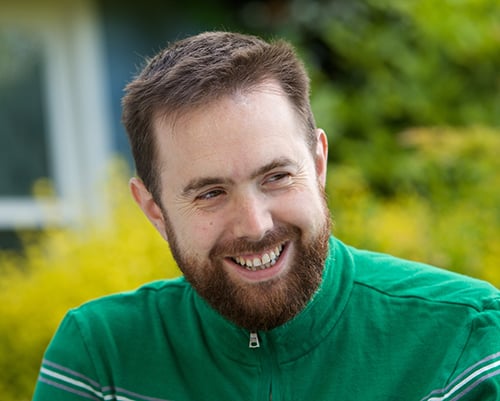
Since joining the New Mobility team almost 10 years ago, I’ve written, edited and assigned numerous stories about emergency preparedness and dealing with disasters. But none of that prepared me for rolling around my street and seeing the valley to the southwest of my house glowing with flame.
I’ve looked out over that same western Oregon horizon thousands of times on my daily rolls around my neighborhood. I’ve seen stunning sunsets, meteor showers, smog, snow and even countless small fires, but this was different. This wasn’t a wisp of smoke or a house fire burning in the distance; it was a massive fire — the kind of glowing hot spot you see on the news or CGI-ed into Hollywood blockbusters.
I’d been following the news all day, tracking fires as a historic east wind pushed them closer and closer to metropolitan areas. Those fires remained far from my home, and I didn’t freak out about the thickening smoke because I knew its origin. But I hadn’t read anything about a fire to the west. That told me it was new, and a new fire that big and that close affected me in a way I hadn’t expected.
My mind immediately started racing. How far away is the fire? How much is burning? And then a question I had never asked myself in almost a quarter-century of living in the same house implanted itself in my head: Could my house be in jeopardy?
It would take a once-in-a-generation blaze to burn across the miles of city still separating me from the flames, but wasn’t that exactly what was happening? Entire towns were being evacuated and hundreds of square miles were burning out of control. Anything seemed possible.
Suddenly, the threat of COVID-19, a summer of social unrest and the prospect of a turbulent fall election all temporarily disappeared.
I realized that despite writing about go bags and evacuations, I’d never even really considered what I’d take or where I’d go if the flames somehow reached me. I quickly went from nervous to depressed to scared and overwhelmed.
I watched the red “go now” zone on the evacuation map slowly creep toward me. I wondered about the thousands of people for whom it was already too late.
As of writing this, over 1 million acres and 1,100 homes have burned in the last nine days. And that’s just in Oregon. Up and down the west coast, unprecedented fires have destroyed lives, communities and some of our most treasured natural habitats.
I wish I had some big takeaway or brilliant insight that would make coping with these harsh realities easier, but I don’t. I’m not sure there is one.
We cope because we have no other choice. It’s not unlike how we respond after sustaining a life-altering spinal cord injury. You deal because you have to. (Don’t miss Kate Willette’s beautifully written column on a similar topic, “We’ve Been Here Before”.)
Thankfully, my house is safe, and the fires, while far from contained, have slowed. An accounting of their true toll awaits.
If 2020 has taught us anything, it’s to never take what you have for granted. Live your life, be ready for whatever may come, and find the time to appreciate what you have.
Support New MobilityWait! Before you wander off to other parts of the internet, please consider supporting New Mobility. For more than three decades, New Mobility has published groundbreaking content for active wheelchair users. We share practical advice from wheelchair users across the country, review life-changing technology and demand equity in healthcare, travel and all facets of life. But none of this is cheap, easy or profitable. Your support helps us give wheelchair users the resources to build a fulfilling life. |


Recent Comments
David Anderson on Phoenix i is the First Wheelchair with Integrated Power Assist
Dan on Phoenix i is the First Wheelchair with Integrated Power Assist
Andrew Slorance on Phoenix i is the First Wheelchair with Integrated Power Assist